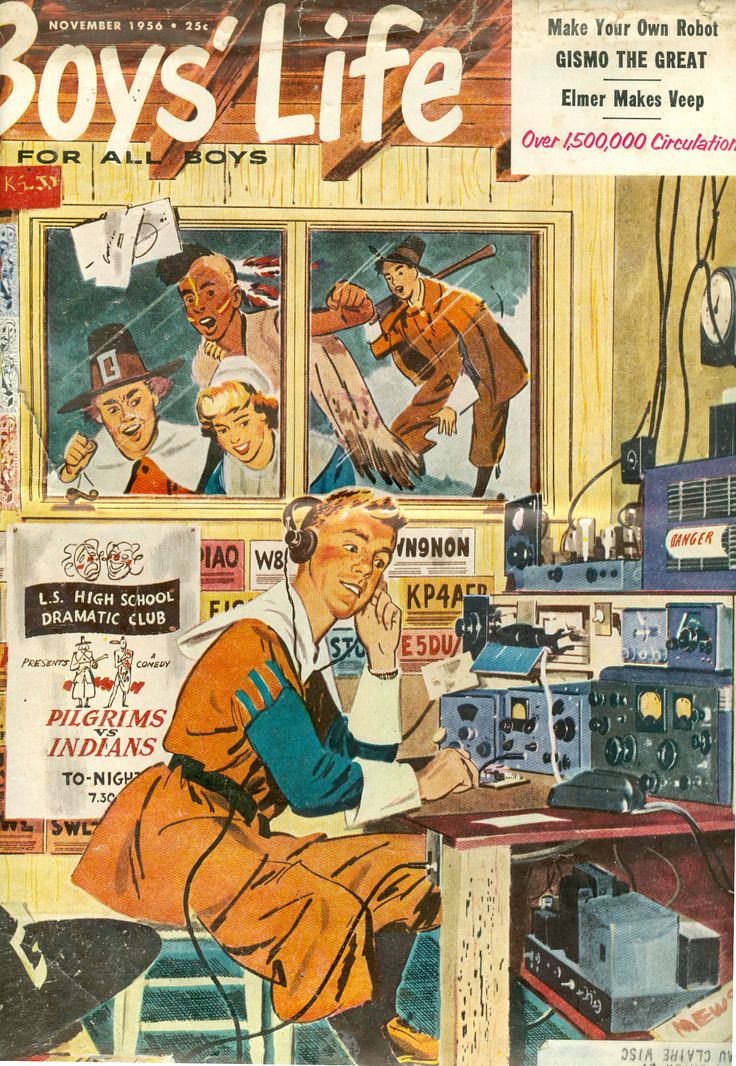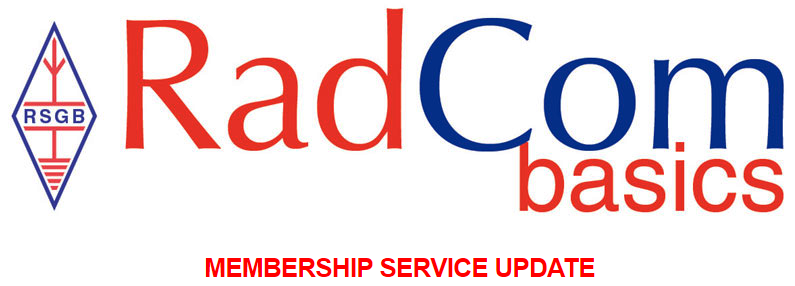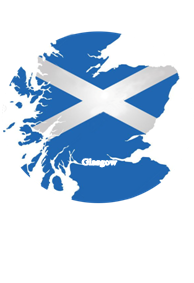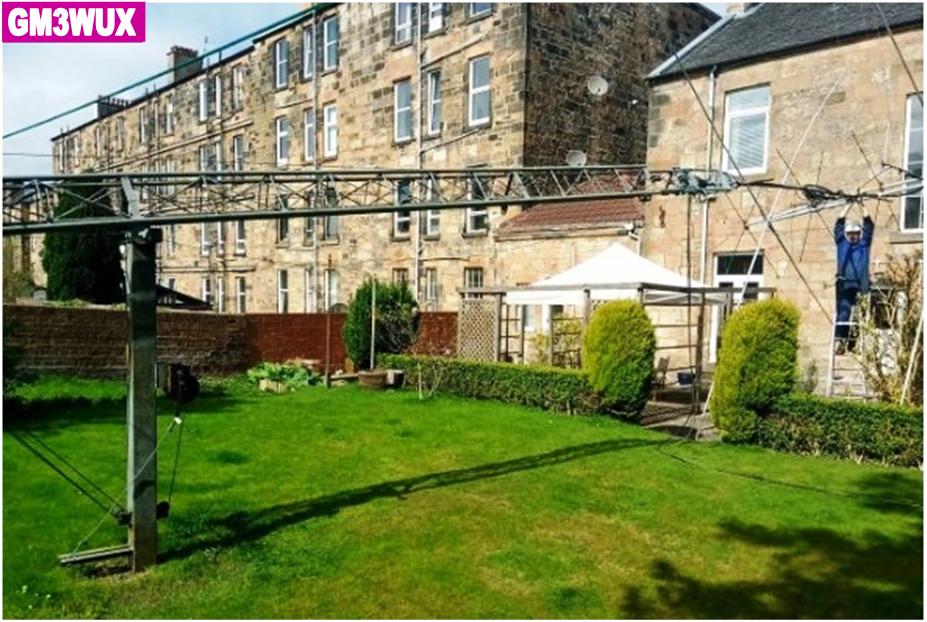
Amateur Radio Takes Precedent

In 1911, George S. Barton, of Somerville, Massachusetts, founded and published the first edition of Boys’ Life magazine. It was edited by 18-year old Joe Lane of Providence, Rhode Island. He called it Boys’ and Boy Scouts’ Magazine. At that time there were three major competing Scouting organizations: the American Boy Scouts, New England Boy Scouts, and Boy Scouts of America (BSA).
Five thousand copies were printed of the first issue of Barton’s Boys’ Life, published on January 1, 1911. The more widely accepted first edition is the version published on March 1, 1911. With this issue, the magazine was expanded from eight to 48 pages, the page size was reduced, and a two-colour cover was added. In 1912, the Boy Scouts of America purchased the magazine, and made it an official BSA magazine. BSA paid $6,000, $1 per subscriber, for the magazine.
MORE Info: Wikipedia .
Students Marine Buoy Actively transmitting on 20m WSPR

By Colin Butler of https://www.icqpodcast.com/
Phil Karn KA9Q, Randy Standke KQ6RS and students at the Mount Carmel High School Amateur Radio Club have constructed and deployed an amateur radio marine buoy, callsign KQ6RS, transmitting 14.0956 MHz USB WSPR. About 700 km off the coast of southern California, the buoy is transmitting WSPR on 20m using the callsign KQ6RS and is being received all over the US and into Canada and Brazil.
The electronics is the 20m WSPR version of the WB8ELK “pico tracker” that has been flown quite a few times (including by us) on long-duration balloons. We removed the solar panels and substituted 21 ordinary alkaline D-cells wired to supply 4.5V. We estimate the battery lifetime will be 6 months.
The basic design was inspired by Bob, WB4APR, at the US Naval Academy. Physically, the buoy is just a 5′ section of 4″ PVC pipe, ballasted at one end to float vertically in the water. The top is closed by a sewer pressure test plug I found at Home Depot; it has a bolt in the centre that acts as a convenient feed-through and mounting point for the antenna, a stainless steel CB whip with a matching network designed, tested and carefully tuned by Randy. We use the sea as a counterpoise, but to avoid direct metal/seawater contact we lined the inside of the pipe with copper tape to form a capacitive connection. We probably spent too much time on this; Randy even modelled the electrical fields in the seawater with a professional RF analysis package.
Checkout the Bouy’s Latest – HERE .
Snips – News For Scotland – 7th June
The News headlines:
- Join Tonight @ 8 on Monday
- Respond to Ofcom EMF consultation
- IARU paper on digital device noise
GB2RS Script – HERE .
CLUB NEWS
Firstly, Club activities taking place daily:-
Ayr Amateur Radio Group and the Glenrothes & District Radio Club.
Now for club Activities taking place on specific days:-
On Sunday
Stirling and District Radio Society – Glasgow and Clyde RAYNET group – Dundee ARC – Kilmarnock & Loudoun Amateur Radio Club & the Mid-Lanarkshire Amateur Radio Society.
On Monday
Edinburgh & District Amateur Radio Club and the Paisley Amateur Radio Club.
On Tuesday
Kilmarnock & Loudoun Amateur Radio Club and the Paisley Amateur Radio Club.
On Wednesday
Mid-Lanarkshire Amateur Radio Society – Lothians Radio Society – Inverness & District Amateur Radio Society and the West of Scotland Amateur Radio Society.
On Thursday
Paisley Amateur Radio Club – Wigtownshire Amateur Radio Club – Lomond Club and the Stirling Club.
On Friday
Mid Lanarkshire Amateur Radio Society – West of Scotland Amateur Radio Society and the Strathclyde Park Amateur Radio Club.
And on Saturday
Kilmarnock & Loudoun Amateur Radio Club.
Finally a reminder that the list of active club nets is listed on the WoSARS website at https://wosars.club/radio-nets/. If you want to have your net listed or to report any changes to existing nets please contact Tony Miles MM0TMZ on address rr1@rsgb.org.uk or (07702)-134188 For any other Scottish news please send details to radcom@rsgb.org.uk and note that the deadline is 10am. On Thursday.
Covid 19 LockDown – Former WoSARS Member Makes The News
Ofcom release database of Amateur Radio Call Signs
Why Balance Batteries – Specifically Li-Po’s?
A question was raised at the Club recently as to why we balance Li-Po’s and not cells such as NiCad or NiMh’s?
I certainly knew it was ‘done-practice’ in order to obtain maximum performance from Li-Po’s, but why not do the same for other battery types?
There is a good write-up in Wikipedia (click the graphic) as to why this is done.
And – the bottom line – it appears, that it could be done with most types of battery packs, which in the end would improve their performance and extend their longevity – just as Li-Po’s.
So now you know!
Edit 05/07/19:
Following on from some questions raised on our Members Forum #73 – HERE is some additional information about Active Balancing and associated circuits, courtesy of Analog Devices.
The RSGB Relaunch RadCom_Basics

As you may have seen in the June issue of RadCom we are pleased to welcome the re-launch of the bi-monthly RadCom Basics.
RadCom Basics is a bi-monthly digital publication targeted at RSGB Members new to amateur radio or less experienced and so it explores key aspects of amateur radio in a straightforward and accessible way. RadCom Basics is sent as an email alert to subscribers when each edition is published and the alert provides a list of contents and links to the various articles. If you would like to receive these email alerts then you will need to complete the short sign up form which can be found by clicking here.
The first issue of the re-launched series is due for release on Friday 31 May 2019 and contains articles on Working portable this summer. Understanding squares, locators and zones and a guide to Antennas – what is impedance and reactance?




